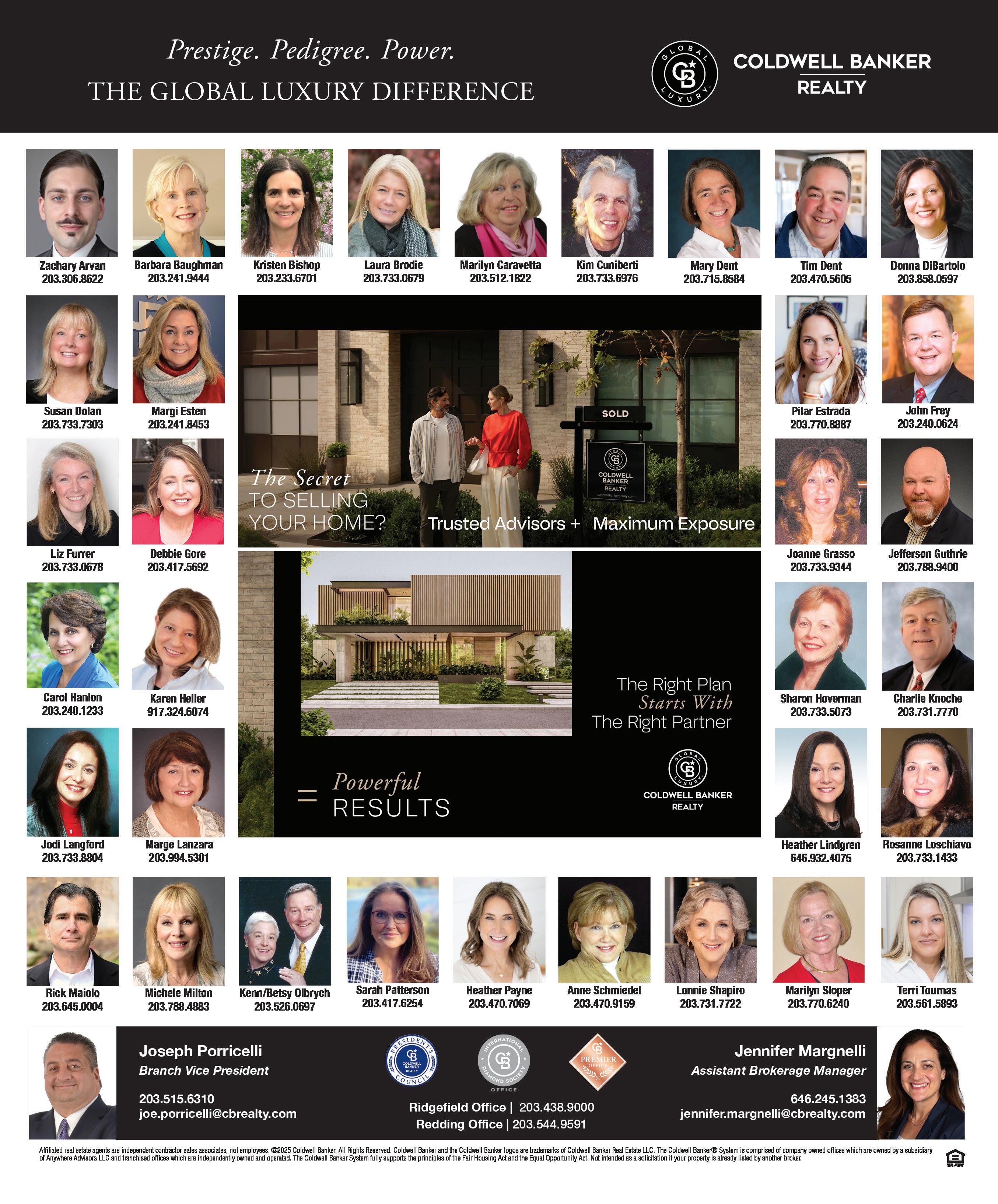














by Professor Brandon Durham
















by Professor Brandon Durham

At Core Academy Brazilian Jiu-Jitsu, our mission is rooted in more than just technique; it’s built on values that shape lives. We are building a stronger community through the core values of Jiu-Jitsu. Our five core principles: personal growth, tradition, mental strength, leadership, and consistency, all serve as the foundation for everything we do on and off the mats.
We believe that personal growth begins the moment someone steps into the academy. Whether it’s building confidence, improving fitness, or learning to overcome challenges, every step forward is a victory. Through tradition, we honor the lineage and integrity of JiuJitsu, connecting our students to a global martial arts legacy.
Mental strength is cultivated in every training session, teaching resilience and emotional control in high-pressure situations. We develop leaders, not followers, but individuals who uplift teammates, lead by example, and inspire others. And above all, we know that consistency is the secret to long-term success, both in training and in life.
Our culture thrives because our community is driven by a shared goal: helping one another become the best version of ourselves. At Core Academy BJJ, we’re not just training martial artists; we’re transforming lives through the art of Jiu-Jitsu.

Professor Brandon Durham Head of Operations at Core Academy BJJ

Dee Dee Colabella Owner dcolabella@rpacartcenter.com
Greg Mursko Publisher publisher@068magazine.com
Dylan Miller Chief Operating Officer dmiller@rpacartcenter.com


Julia Bruce Editor-In-Chief editor@068magazine.com
Contributing Writers
Johanna Dodd, Jessica Mancini, Carin L. Weisman, and Carolyn Prusa
Contributing Photographers
Dylan Miller, Kate Wark, Amanda Whittemore, Graphics Press LLC, and David Schulze
Advertising Sales
David Gursky | 914.646.9141 sales@068magazine.com
Erica Shillingford | 914.844.5602 eshillingford@068magazine.com
068 Magazine is a publication of Colabella Media LLC. ©2025. All rights reserved. No part of this publication may be reproduced without permission of the publisher.
Lisa Cambridge-Mitchell
Lisa Cambridge-Mitchell spent over 20 years as a senior music executive at Sony and BMG, shaping the careers of global superstars such as P!nk, Usher, Mary J. Blige, and Snoop Dogg, before launching her own practice, Persist in Joy, which provides coaching and workshops for high-performing creatives and executives. Lisa and her husband have lived in Ridgefield since 2005. In this issue, Lisa talks with award-winning indie filmmaker, Luchina Fisher, about the art of filmmaking. Her story can be found on page #16.
Andrea Valluzo
Andrea Valluzzo got her start writing for area weekly newspapers, including the Wilton Bulletin, and now is a freelance writer who writes feature stories on people and businesses all over Connecticut. She especially enjoys writing on arts and antiques topics. On page #30, she explores the changing dynamics of three area sculpture gardens, which create interesting dialogues between the artworks and the surrounding landscapes.
Janet Ozzard
Janet Ozzard is an editor and writer who has worked at many magazines, websites, and museums covering style, art, food, and culture. She lives with her family in Redding, and considers herself an exceptional Wordle player. On page #34, Janet shines a light on the new Connecticut Humane Society facility, reently openined in South Wilton, that’s helping pets and their owners in the 068 area.



Carin L. Weisman
Carin Weisman is an award-winning communications professional and author of numerous works, including the book #morninghaiku: a simple practice to inspire your every day as well as a regular contributor to 068 Magazine. Carin reports on the new found popularity of the ancient game of Mah Jongg in this issue’s Is That a Thing? You can find Carin’s article on page # 58.
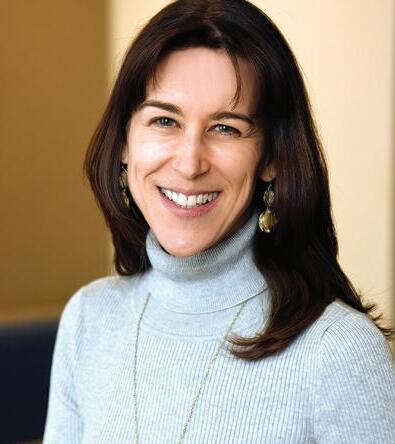


by Charlotte Purkiss



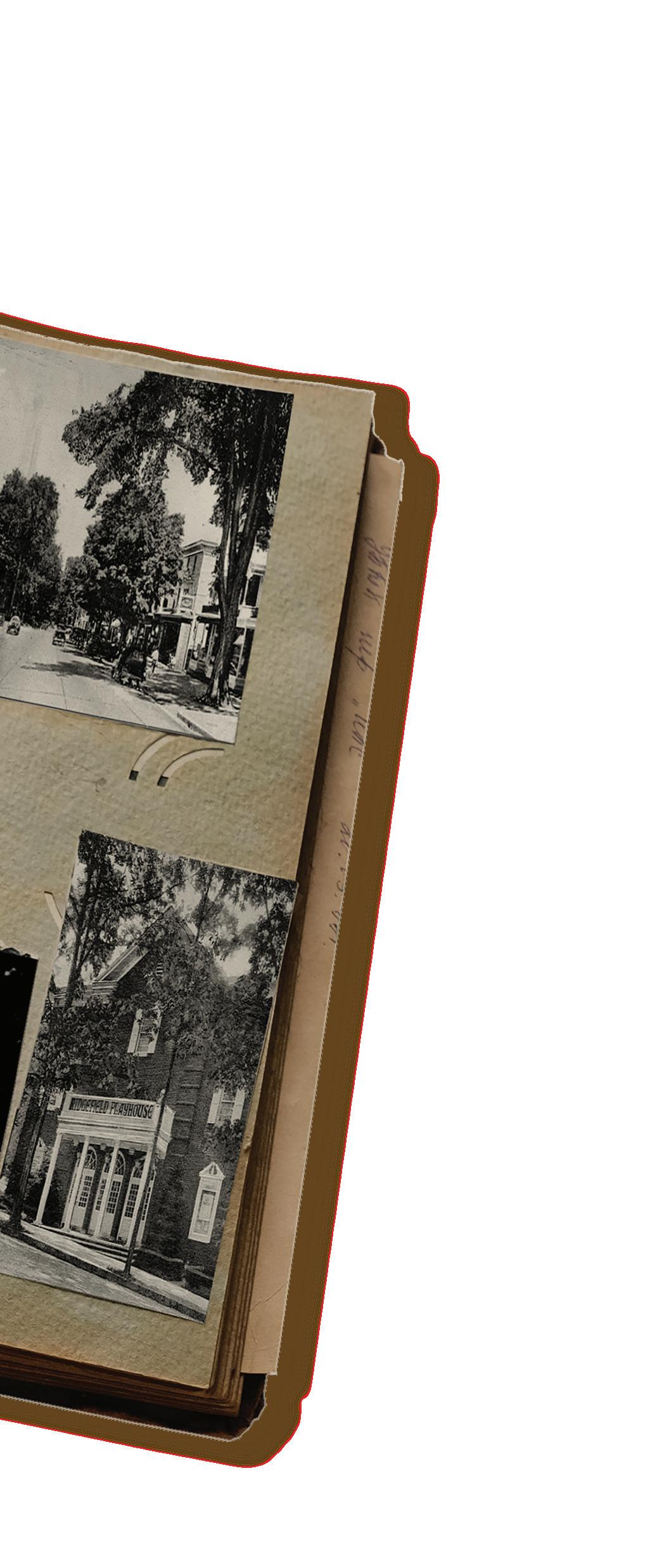
e live in a society that focuses on youth, for its talent, energy, and physicality, but all around us are the stories and remarkable lives of those who have been on the planet for much longer and have much more to share. We are very fortunate to have seniors in our 068 community who’ve led extraordinary lives. For my Senior project at Wooster School, I spoke with several seniors to learn about their lives. Seniors have so much to teach us, they are living history, and they have a perspective on life that young people cannot have.
Three Ridgefield residents I interviewed all had immensely different upbringings, yet they all eventually found Ridgefield. Their reasons for settling here in town varied from the school system to the New England charm reminiscent of their
Eve Mencher, 90, came to Ridgefield 11 years ago, after moving from Wilton where she had lived for 45 years. Eve told me about her life growing up in England during World War II, of traveling to Egypt in her early 20’s to be a nurse at a boarding school, and of briefly being taken prisoner of war because of the Suez crisis. She talked about her great adventures all over the world, and of learning to really appreciate the
Ben Shaw, 85, found Ridgefield 57 years ago after seeing an ad in the newspaper for a house for
sale near Lake Mamanasco. Ben talked about how he traveled to Vietnam, Bulgaria, Thailand, and Patan with his wife, Darla. Such amazing things came up when these seniors told their stories - their greatest adventures, and their most exciting journeys. One of the seniors told me all about her school trip to the Supreme Court, where they heard the decision on Brown vs. the Board of Education. She told me about her travels to hear Martin Luther King Jr.’s famous “I have a dream” speech at the March on Washington in 1963, and her solo travels around the world.
When asked about their regrets, they spoke of allowing fear to hold them back and their inability at times to keep an open mind. One said, if you are asked to do something, just start by saying “yes.”
Each of these seniors has lived in Ridgefield for a very long time now, and although they find the town has changed, it remains a strong and vibrant community. All the seniors mentioned how special they consider Main Street. They love Ridgefield because of the choice of parks, restaurants, churches, lakes, art galleries, and theaters. They all value the unusually strong sense of community in the town - the concerts and gardens in Ballard Park, the Christmas lights, and the parades. Their best piece of advice? “Put the phone down and appreciate your surroundings.” They recommended always keeping an open mind, whether in relation to new places or new opportunities. They all believe in staying grateful.
This project and the people I met has become more than a piece of school work to me. I have built connections with these remarkable people. They have let me into not only their houses but their lives too, and they have all been extremely kind. I am grateful for their willingness to share their stories. Each one of them has shown me that the key to living a long life might well be to live an interesting life, to embrace opportunity, be kind to others, and to do it all with an open mind. •

by Lisa Cambridge-Mitchell
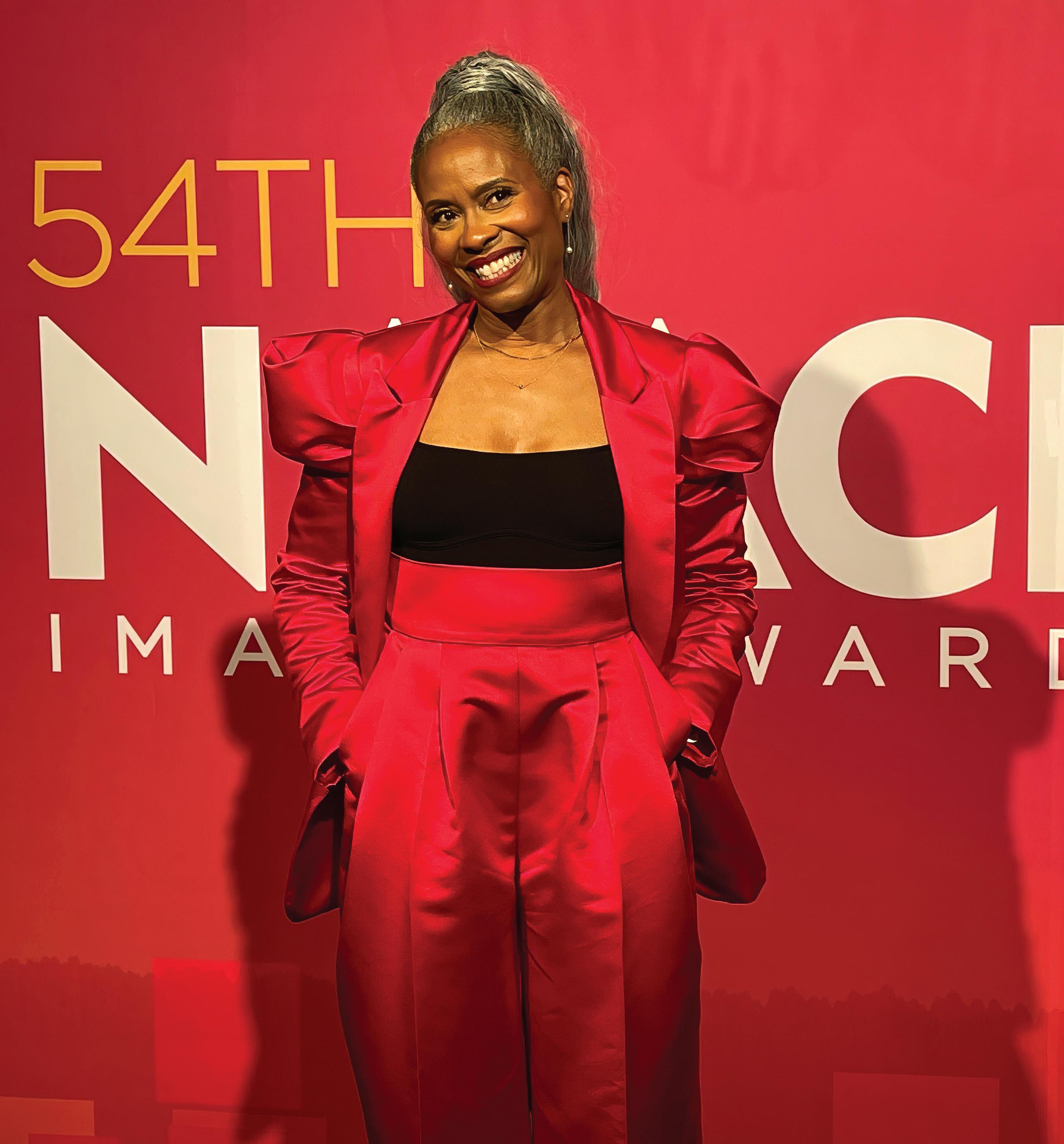

There’s no map for independent filmmaking—no step-by-step guide, no prescribed format. Every indie filmmaker is, in a sense, charting new territory. The process demands deep curiosity, relentless passion, and an openness to let the story lead. At the heart of every great independent film is a story so urgent, so alive, that the filmmaker becomes obsessed with being the conduit— following its path, capturing its soul, and shaping it into something that moves others.
This devotion to storytelling is immediately clear when speaking with New Fairfield resident and Emmy Award winning indie filmmaker Luchina Fisher. A few themes consistently rise to the surface in conversation with her: passion, precision, and profound respect for the collaborative nature of filmmaking. “I have always loved film,” she says simply—but behind that love is decades of dedication to her craft.
While some say the devil is in the details, for Fisher and other indie filmmakers, the


details are where the magic lives. The most impactful work shines in the quiet moments— building rapport with cast and crew, making sense of every carefully considered frame, and nurturing the trust built with subjects over time. That trust isn’t a byproduct—it’s the backbone of the process. And for Fisher, it’s no accident. It’s the result of more than 30 years of community-building and craft-honing: raising funds, writing scripts, producing, directing, and editing.
If the path to independent filmmaking feels overwhelming, consider a simple yet powerful piece of wisdom Fisher offers: Give yourself the green light. Not just for the projects that speak to you—but for every step along the way.
That green light starts with permission to call yourself a filmmaker, even before the credits roll. Indie filmmakers often wear many hats: they’re the director, the producer, the scriptwriter, the editor, and even the curious audience. And they do it all while holding down day jobs, caring for families, or simply navigating the realities of everyday life. Fisher leaned into that multifaceted identity early on, even in film school. “I wanted to be the actor, the director, the producer, and the scriptwriter,” she recalls. From the beginning, she embraced the full spectrum of storytelling—giving herself permission to take up space in every part of the process.

Early in her career, while
working at the Miami Herald, Fisher had dreams of making film. She began to find community with other creatives—some were writing novels, others editing or making short films. While staying with a friend who edited from home, she had a pivotal realization: I can do that. That quiet but powerful moment helped build the confidence she needed to own her identity as a filmmaker and to begin stepping deeper
into the storyteller she already was. Other green lights followed. One of the most transformative was creating space to tell a story without an end goal in mind. Fisher honed her skills in the world of television and print journalism, with tight timelines, predefined outcomes, and network expectations. Independent filmmaking demands something entirely different. It asks for patience, curiosity, and a willingness to

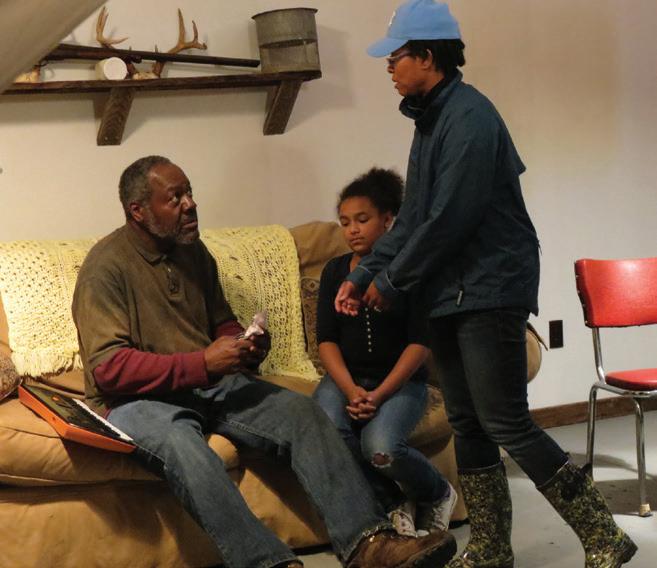
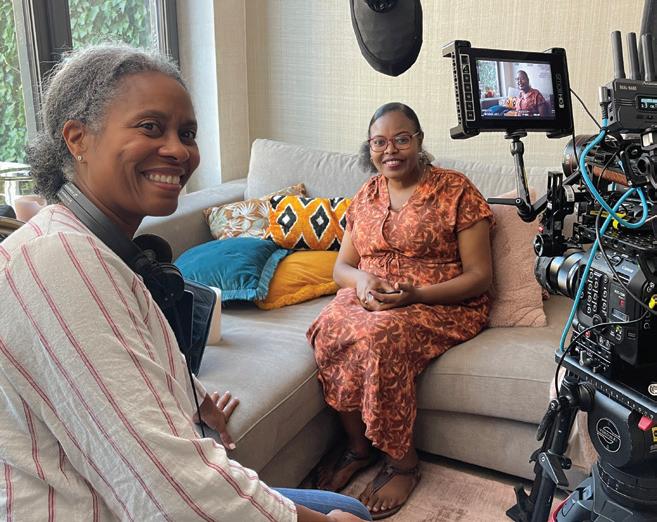
let the process unfold on its own terms. It takes time to develop a story. Time to write. Time to raise funds. Time to build the trust required to tell it honestly.
As you move forward, something else happens—you begin to share your vision. You talk to people about what you’re working on. You build relationships, lean into your community, and slowly start connecting the dots. Skills you didn’t know you possessed begin to surface. Support you never imagined shows up. You realize you’re not just making a film—you’re building something much bigger.
Here’s the beautiful part—while you’re evolving, so is the technology. Every step in your journey is met with new tools, new platforms, and new ways to bring your story to life. Take crowdfunding, for example—it’s a completely different landscape than it was 20 years ago. Today, you can reach far beyond your immediate circle to get a film made. The same goes for crowdsourcing talent and expertise. Whether it’s finding collaborators, learning new software, or building a global audience, the resources that once felt out of reach are now part of the indie filmmaker’s toolkit.
None of this is possible without that first act of courage. You need to take the first step and give yourself the green light. That single act of permission is where everything begins. It’s not just about making film—it’s about making room for your voice to take up space in the world. •




by Johanna Dodd
As the dog days of summer pass, and wile many start moving their regular order from iced to pumpkin spice, I thought it was time to investigate the chemistry of America’s original favorite beverage, coffee.
Locally, there is no better person to talk to about the ways of caffeine than Wendy Cahill, owner of Bethel’s community coffee house, Molten Java.
Coffea is a shrub or small tree, native to tropical parts of Africa and Asia, but now widely grown in tropical parts of Central and South America. The plant produces caffeine to deter insects and browsers from eating it, but, as with many plant toxins, humans like what it does to their body, so they have cultivated it to make more of the toxin! There are two main species; Robusta, which has a lot of caffeine, and Arabica, which has less caffeine but is sweeter. The coffee fruit is not really a ‘bean’ or a ‘cherry’, though we call them that.
The soil the plant is grown in, how much rain and sun, and how the ‘cherries’ are processed all produce very distinct flavour profiles in the final coffee beans. Cahill’s favorite raw beans are from Honduras, where
the high-mountain farms still tend to be small-scale and often use the ‘wet process’ to finish the raw bean. This is where the cherry is pulped, which can then be used for caffeinated soft drinks. The beans are then fermented to remove any clinging pulp, and finally washed –by actual monsoon rains in Papua New Guinea - then usually sun-dried, all of which results in a ‘brighter’ tone in the final roasted bean.
The raw bean contains a heady mix of different chemicals, predominantly caffeine, but also flavonoids, the starter chemicals for many of the flavors humans crave. Important in coffee are those that provide its characteristic bitterness, chlorogenic acids. Milder chocolate flavors are the result of chlorogenic acid lactones, like 3-caffeoylquinic-1,5lactone, and darker, more bitter flavors come from a further breakdown of the chlorogenic acids to phenylidanes. Most other flavors come from the Maillard reaction. This is seen when proteins and sugars in food combine into flavor compounds that are controlled by the heat and temperature the food is cooked at, which is where the roasting

process comes in.
Large-scale roasting happens in drum roasters, which look like massive washing machines. Cahill’s roastery is small-scale and uses a hot air roaster, not dissimilar to a popcorn air popper. She controls the temperature and the longevity of the roast to get different complexities from her beans. Being small scale allows Molten Java’s coffee to be very distinct from other offerings, and also allows her to make beans to her customers’ preferences. “From the plant to how they pick it, and how they dry it, all of that can be really different from plantation to plantation”, so she works with specific smaller operations to maintain her coffee’s consistency. I asked Wendy the best way to drink coffee and she says, “For me, there is no better way than traditional Italian Espresso, where you get all the darker notes and it pulls all the oils out to make that beautiful crema.” Excuse me, while I order my coffee, hold the pumpkin spice! •



Carving pumpkins into spooky or silly grinning faces is a longtreasured Halloween tradition.
The Great Jack O’Lantern Blaze, held annually at Van Cortlandt Manor in Croton -on-Hudson, NY, takes this tradition and turns up the voltage – offering an amazing walking tour through a pumpkin wonderland.
Van Cortlandt Manor is part of Historic Hudson Valley, a non-profit organization that owns and operates several historic sites in the area, including Sunnyside, the home of the author of The Legend of Sleepy Hollow, Washington Irving. “The greater Sleepy Hollow area has always been a magnet for Halloween enthusiasts. We were looking for a way to artistically celebrate the season, as well as honor this unique site,” says Rob Schweitzer, VP of Communications for Historic Hudson Valley and a 068 resident.
The inaugural Great Jack O’Lantern Blaze launched in 2005, with eight nights featuring 2,000 carved pumpkins that were mainly individually displayed. “Even though it rained most of the nights, it was a huge success,” says Schweitzer.





by Julia Bruce





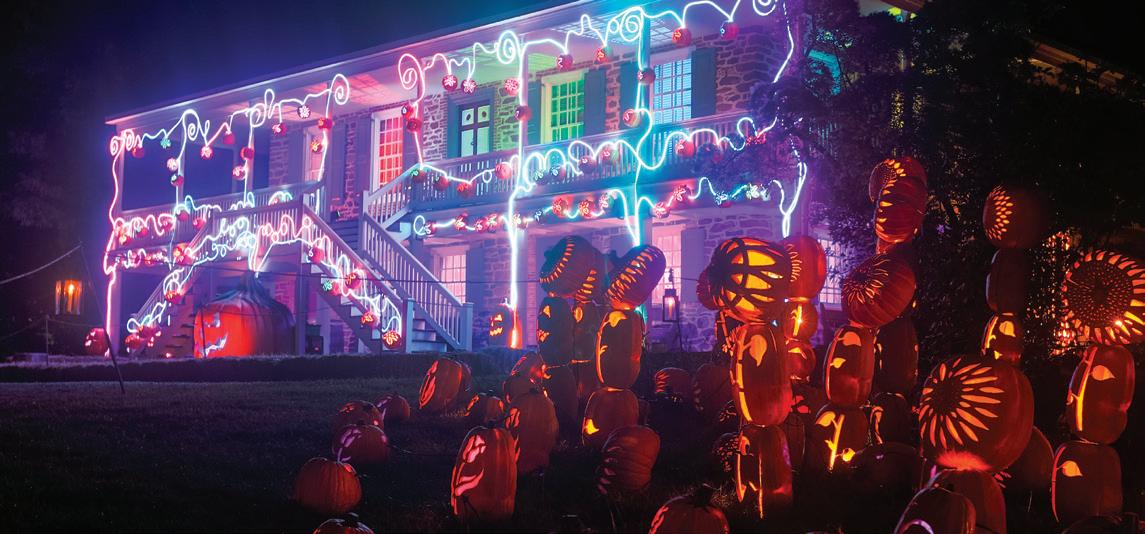






Now in its 21st year, the Blaze promises to keep the flame going, so to speak, with an even bigger and more spook-tacular event. This year’s event expects to welcome approximately 125,000 visitors during its 52-night run, from Friday, September 12th through Sunday, November 16th. As always, there is plenty of free parking on site. This year’s event has grown to include between 7,000 and 8,000 pumpkins, many of which are combined to create mind-boggling structures. “We’ve really upped our game on themed installations. Over the years, we’ve added a lot of high-value production elements such as synchronized lighting, music, and movement,” say Schweitzer.
Returning this year are perennial favorite displays, such as the pumpkin planetarium, a completely immersive experience complete with music and lighting that visitors can walk through. “It has become a very popular photo and Instagram-worthy spot,” says Schweitzer. Other fan favorites include a 25-foot lighthouse, complete with a functioning and spinning light on top.
While Schweitzer doesn’t want to share all the spoilers for this year’s event, he does say that one new installation visitors can look forward to is a homage to the Wizard of Oz. “Obviously, we have a lot of orange, but we’re working in a lot of green to this one,” says Schweitzer.
Strolling through the half-mile pathways takes approximately 45 minutes. Once visitors complete their tour of the Blaze, they can grab something to eat at Café Blaze or bring home a memento from the Blaze Boo-tique.
An event this size takes a lot of organization – it’s really a year-round endeavor. Pumpkins are ordered from local Hudson Valley farms as early as January as installation plans start to solidify.
The main creative carving team consists of about ten people – some of whom have a professional artistic background and others who’ve simply discovered a knack for carving. “You have to be okay with pumpkins as your medium,” laughs Schweitzer. While some of the pumpkins displayed are foam, many are real, sourced from farms in the Hudson Valley. “Each carved pumpkin lasts a couple of days, depending on the weather. We are continuously carving throughout the run of the event,” says Schweitzer. Retired pumpkins are composted and used as fertilizer on the various properties of Historic Hudson Valley.
The Blaze is the largest annual fundraiser for Historic Hudson Valley – the sales and revenue subsidize the educational programs they run throughout the year at all of their historic sites. It also has been and continues to be a fantastic community event, drawing people near and far to not only enjoy the display but also visit restaurants, hotels and other historic sites in the Greater Sleepy Hollow area. “Halloween has become one of the largest holidays in the US in terms of retail, shopping, and interest. The Blaze is happy to be a part of this. The appeal is the creativity and artistry that goes into creating these displays. There’s something for everybody,” says Schweitzer.
For more information, please visit hudsonvalley.org •
by Andrea Valluzzo
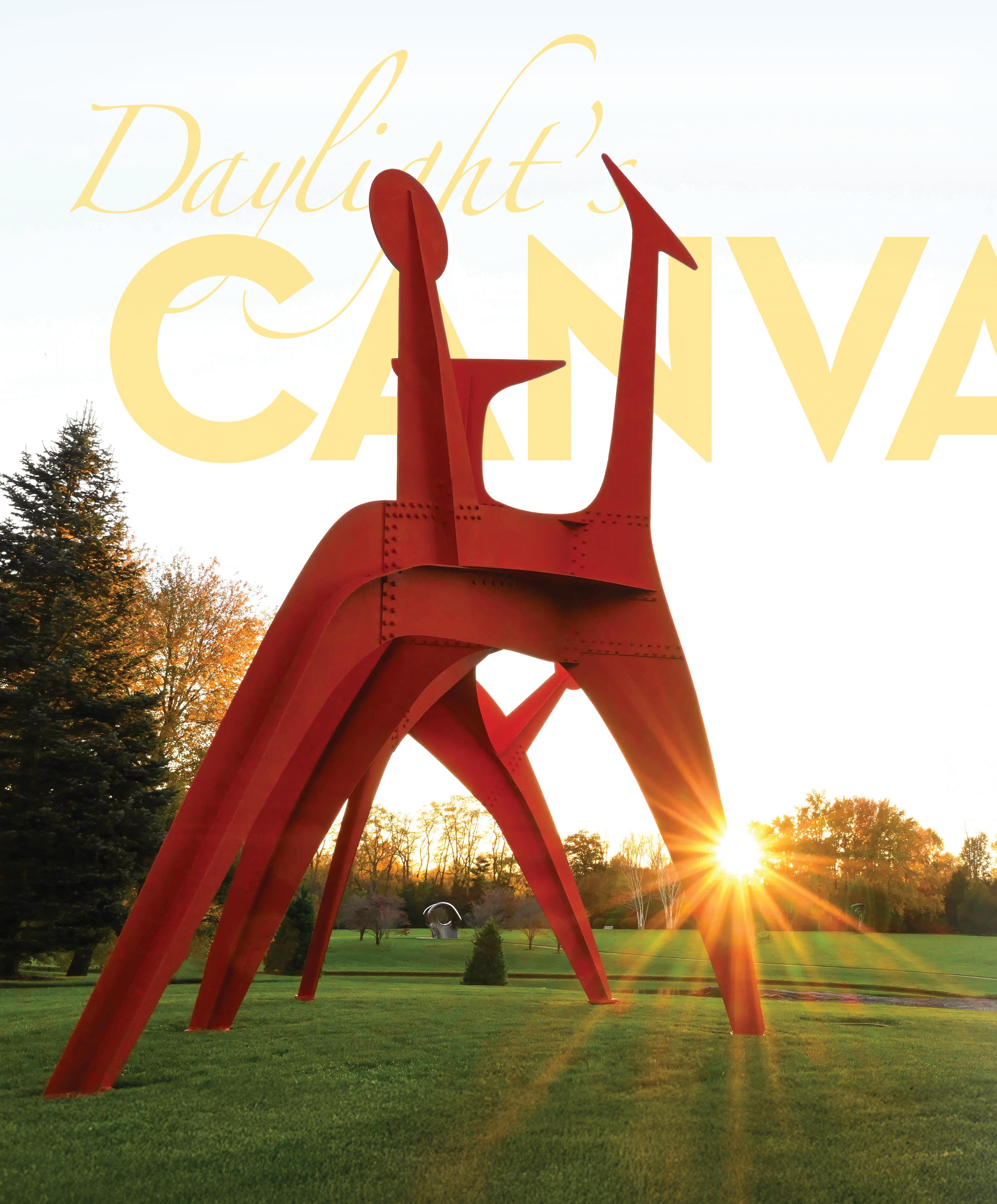


Favorite museums may merit repeat trips but seldom surprise. Paintings and sculptures displayed inside a museum typically look the same day to day. One of the joys of experiencing public art outdoors, however, is discovering sculptures that are mutable, whose creators are a bit like modern alchemists. The pieces are part of, but also in conversation with, the hills and meadows around them.
Whether crafted of stainless-steel, bronze, marble, or stone, these monolithic artworks always appear fresh based on the time of day or the weather. Even the act of walking around a sculpture affords different views and impressions as one observes subtle changes in the piece’s finish and the interplay between the art, the air, and the surrounding landscape.
Worth a day trip, the three sculpture gardens below are open seasonally, visitors can go online for tickets and hours.


Purchase, NY www.pepsico.com/sculpture-gardens
Visitors to the Donald M. Kendall Sculpture Gardens on the grounds of PepsiCo in Purchase, N.Y., may be initially surprised by the breadth of work from famous sculptors like Alexander Calder, Auguste Rodin, Henry Moore and Richard Serra. As one strolls the gardens, however, the art itself takes prominence, not who made it.
Amanda Whittemore, PepsiCo’s art curator for the gardens, says these works are about the artist and their creation but more importantly, center on the viewer’s interpretation. “Art is meant to be seen and that is why public art is so important. It allows people to share in an experience together without barriers,” says Whittemore.
The 42 sculptures on view at the DMK Sculpture Gardens mostly favor Midcentury Modern styling; highlights include “Passage” by Richard Erdman, “Grizzly Bear” by David Wynne, and “Haida Totems” by Robert Davidson, all commissioned for the gardens. The first sculpture placed here in 1970 was Moore’s “Double Oval” while Calder’s abstract “Hats Off” has long been a crowd favorite.


New Windsor, NY
www.stormking.org
“Experiencing art outdoors is fundamentally transformative,” says Nora Lawrence, Executive Director of Storm King Art Center, a 500-acre “open air museum” that has over 100 permanent outdoor sculptures, many of which were created site-specific in conjunction with the artists. “When you take art beyond the walls of a gallery, not only do you have the opportunity to experiment with scale, but it allows the works to be in active dialogue with the landscape. Shifts in light, the changing seasons, the wind, and even the sounds of nature create a singular experience for each visitor.”
Among site-specific pieces that resonate strongly with audiences are Maya Lin’s “Storm King Wavefield” and Andy Goldsworthy’s “Storm King Wall” that are both notable for how well they work here even as the landscape changes seasonally. Commissioned pieces like Sarah Sze’s “Fallen Sky” and Martin Puryear’s “Lookout” use materials like polished stainless steel and brick masonry that invite viewers to see the landscape in new ways.
Visitors will always find something new to behold. Besides permanent artworks are temporary installations and special exhibitions, including three new works by Kevin Beasley (including his largest piece to date) and Brazilian artist Sonia Gomes’ US solo museum debut.
Hill Farms
Woodbury, CT
www.edwardtufte.com/hogpen-hill-farms
On the winding drive into the 234-acre Hogpen Hill Farms in Woodbury, Conn., visitors encounter artist-made road signs like “Our Only Language is Vision” and “If You See Something Say Nothing,” prompting them to enjoy the 80+ artworks ahead in quiet reflection to really take in what they see.
Statistician-sculptor Edward R. Tufte, who goes by ET, enjoys adding whimsy and humor into his sculptures. A fitting example is “Rocket Science,” which measures over 70 feet long and 30+ feet tall. Those with keen eyes will observe lawn chairs attached to one side, a ventilation fan on top that spins with the wind and an oldfashioned TV antenna. Rife with inside jokes, some only known to the artist, this “rocket” even has brakes from a Porsche. “I made up this idea that there’s this crackpot in their backyard who is going to make a rocket that is going to Mars,” says ET.
Long before sculpting, ET was interested in data and “forever knowledge.” His sculptures pay homage to such concepts, such as threedimensional stainless-steel diagrams he adds to his artworks after the originals by physicist Richard Feynman.
The artist learns from his pieces long after their creation. “Celestial Dancer with Calipers and her DNA” stands on a hilltop with the stainlesssteel slab its elements were cut from. It was not until several years later that ET realized the slab contained evidence of the artwork’s DNA.•







by Janet Ozzard
Every pet owner wants their animal to be healthy, happy, and living their best lives. Sometimes though, the cost of caring for your beloved pet can be a financial burden. The Connecticut Humane Society’s (CHS) new center on Danbury Road in Wilton aims to address that stress for residents as far as away as Stamford. At nearly 15,000 square feet, the new facility, built on 18 sprawling acres, includes dog-walking space, a “catio” (pretty much exactly what it sounds like), adoption and foster services, education, and more.
A center that offers public low-cost vet services and a free pet food pantry might not seem necessary in what’s generally considered a well-to-do area. But the economic reality of pet care cuts across the income scale, says Barbara Naugle, the CHS director of development. Pet surrenders (when owners voluntarily give up their animals) were already on the rise pre-COVID, then spiked during the pandemic. Disruptive life events—a move, a divorce, a job




loss, an illness—can make it difficult for owners to care for their pets. And care costs (routine tests, medications, the occasional kennel stay) are increasing. All the cuddles in the world won’t cover a thousand-dollar vet bill. On top of that, there’s currently a nationwide shortage of veterinarians. It’s incredibly expensive to become a vet, with student loans in the realm of $150,000. The profession itself is also changing, with medical conglomerates buying up small practices and reducing services that require expensive diagnostic tools.
“When we opened our clinic in Newington, it was mainly for people struggling financially or with disabilities, or senior citizens who only had their Social Security income,” Naugle says. “Now we’re seeing a new group coming to the clinic. The cost to keep a pet is huge for every family, those with a professional job, or a hairdresser or a mechanic—people in our community who fill all the gaps and do all the extra jobs. Everybody’s struggling.”
Enter the CHS. Yes, they take in abandoned or surrendered animals (the organization only handles cats, dogs, rabbits, and other animals that Naugle describes as “a pet that might sit on the couch”). They can help would-be pet owners adopt. But the focus has shifted to keeping a pet with its original family. That is better for all concerned, she says. Last year, 70 percent of the 5,300plus pets the CHS dealt with were served through what’s called

“retention programming.” Low-cost vet services, the free-food pet pantry, pop-up wellness clinics for basic treatments like vaccines and tests, even short-term fostering for households in crisis; all of this is meant to keep owner and pet under the same roof.
It’s taken over 12 years for this new center to get across the finish line, says Naugle. First, the organization had to determine the best location that could serve areas not already covered by existing centers. Then the real estate search began; all told, the group looked at 48 spaces. In 2020, they found the North Wilton site. With eighteen wooded acres, plenty of outdoor space, and proximity to key roads and highways, it was perfect for their vision. “In 20 years, people will be scratching their heads saying, ‘How did they get this sweet spot?’” says Naugle. The center was thoughtfully built to keep the natural habitat in place as much as possible, including retaining hundred-year-old trees and native wetlands.
For would-be adoptees, there are many ways to connect. People can even consider fostering animals who may not have much time left. “We have people who’ve adopted older pets, and a few volunteers who do hospice foster,” Naugle says. “People in Connecticut have huge, huge hearts.”
The newly opened Connecticut Humane Society Center is at 863 Danbury Road, Wilton. Go to cthumane.org, or call 800-452-0114 for more information. •









068:
Ifind that I have more in common with my 1954 Willy Jeep than with the car I drive today. We’re all a product of our time, and I grew up in a world where survival was far from glamorous. In my youth, I spent countless hours foraging along Long Island’s south shore for clams, crabs, eels, and fish. A lawn wasn’t a priority—growing vegetables was. Our family didn’t buy groceries in the way most do now. In the fall, we would buy half a cow, milk, eggs, and chicken directly from a farm. I wasn’t proud of it at the time, but looking back, I now recognize how fortunate I was to grow up that way.
Age is not a determinant of functionality. Old things, like my Willy Jeep, remain functional and even stylish, so long as they are well-maintained. If you’re over 50 and feeling off, it’s likely not age but illness. When it comes to health, most of us know the basics: eating unprocessed, whole foods is essential. We should eat things that closely resemble their original form—vegetables, meats fed a natural diet, and plant-based proteins like lentils, beans, and chickpeas several times a week. Sugar is the enemy, particularly high-fructose
corn syrup, which harms mitochondrial function. It’s insidious—just as addictive as drugs, and maybe more so because it’s something we crave daily. You can’t outrun a poor diet, no matter how hard you try.
For clean, nourishing food, I recommend shopping at Nature’s Temptation in town. Jeff Konchalski and Diego work tirelessly to bring the best organic and natural products to your table. For a quick, healthy meal, visit Botanika, where chef Elina serves plant-based protein lunches that are as delicious as they are nutritious.
Of course, exercise is just as critical. As adults, we must prioritize maintaining our muscle mass and staying active. If you’re looking for a great workout, I highly recommend Plank Ridgefield, led by Linda Murphy. They offer expert coaching in core strength, balance, and agility, plus an espresso bar and stylish workout gear to keep you motivated. For running

enthusiasts, CT Run Co. has technologydriven shoe fittings to ensure you have the best gear for your runs,
and Megan Searfoss’s events are a great way to get involved in the local running community.
It’s equally important for parents to encourage their children to step away from screens and engage in physical activity outdoors. Exercise during childhood builds the foundation for a healthy life. You don’t need to be a star athlete—what matters is getting active and enjoying it.
Connections with others and creating value in your community are just as important for lifelong happiness.




I’m not a fan of complete retirement. There’s too much life left to live, and too many opportunities to find meaning and connection, whether through churches, organizations, or just by being active in your community.
As for true happiness, it comes from little indulgences, like visiting Deborah Ann’s Sweet Shoppe for the best chocolate around. Quality chocolate, free of heavy metals, is not just a treat—it can even double your circulating stem cells! So, go ahead and indulge once in a while!
Life is a gift. Every morning we wake up is a miracle, and it’s worth taking time to appreciate and connect with others. We have

the makings of a “Blue Zone” right here in Ridgefield, a community where health, creativity, and connection thrive. Every individual has the potential to positively impact their community, whether through entrepreneurship, volunteering, or simply sharing their unique gifts.
Finally, when it comes to rejuvenation, I’m here to help. Whether you’re looking for aesthetic treatments or cellular rejuvenation to boost health and longevity, we offer natural, non-invasive solutions. Treatments like PRP, PRF, and stem cell therapy are designed to promote healing from within. One of the most powerful tools we have is medical grade Hyperbaric Oxygen Therapy
(HBOT), which enhances the body’s natural healing abilities. It’s a remarkable process that helps the body regain balance and restore vitality without the side effects of traditional medicine.
If any of this resonates with you, I’d love to talk more about how we can support your health journey.
With best regards,
“The Gift” (203) 806-9250

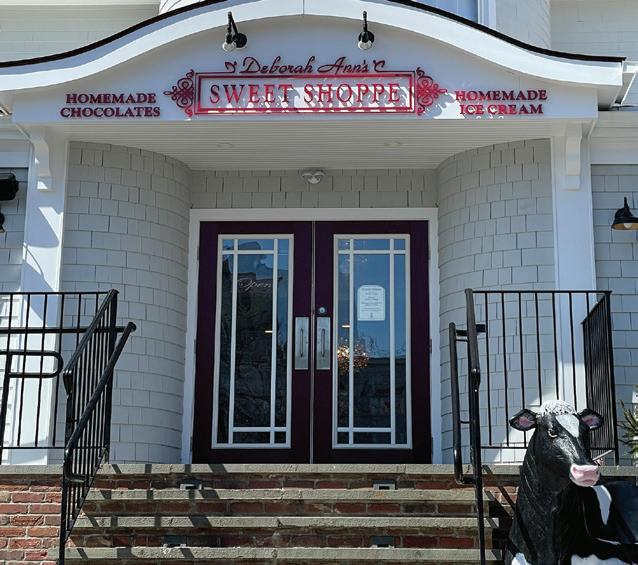



The 2025–2026 season of A.C.T. of CT will open with a high-voltage premiere: a newly reimagined production of Almost Famous: The Musical. This will mark the first professional regional staging of the show since its Broadway debut in 2022—and it comes with major star power behind the scenes.
A.C.T. of CT has partnered directly with the show’s original creators—Pulitzer Prize and Tony Award–winning composer Tom Kitt and Academy Award–winning writer and filmmaker Cameron Crowe—to breathe new life into this rock-androll love letter. Not only will the book and score be revised for this production, but the show will also be guided by a fresh directorial vision from A.C.T. of CT Artistic Director Daniel C. Levine.
“Almost Famous is a tribute to the rock and roll, community, and what it means to be a fan.

This reimagined version of Almost Famous will be intimate, raw, and electric—and we are beyond honored to have the original creators entrust A.C.T. of CT with this next chapter in the life of their work,” says Levine.

Cameron Crowe, whose semiautobiographical 2000 film of the same name inspired the musical, has been deeply involved in the reimagining process. “Working with Daniel C. Levine, and with Tom Kitt and Bryan Perri again, has been such an exciting and joyful experience,” he shares. “Almost Famous has always been my most personal story, and the intimate and inspiring attention this creative team brings to the production reminds me of when I first fell in love with music.”
Bryan Perri—music supervisor for the original Broadway run—returns to his post for the A.C.T. of CT production, bringing continuity and depth to the process.
For Kitt, this version is more than a revival—it’s a chance to define the show’s legacy. “This is one of my most special and cherished creations,” he says. “Enormous thanks to Dan, Bryan, and everyone at A.C.T. for giving Cameron and me this extraordinary opportunity to create what we hope will be the definitive version of Almost Famous.”
The musical follows a teenage journalist who finds himself immersed in the unpredictable, soul-stirring world of 1970s rock. With its creators actively engaged, A.C.T. of CT continues to position itself as a bold, innovative force in American regional theater.
For tickets, visit actofct.org •

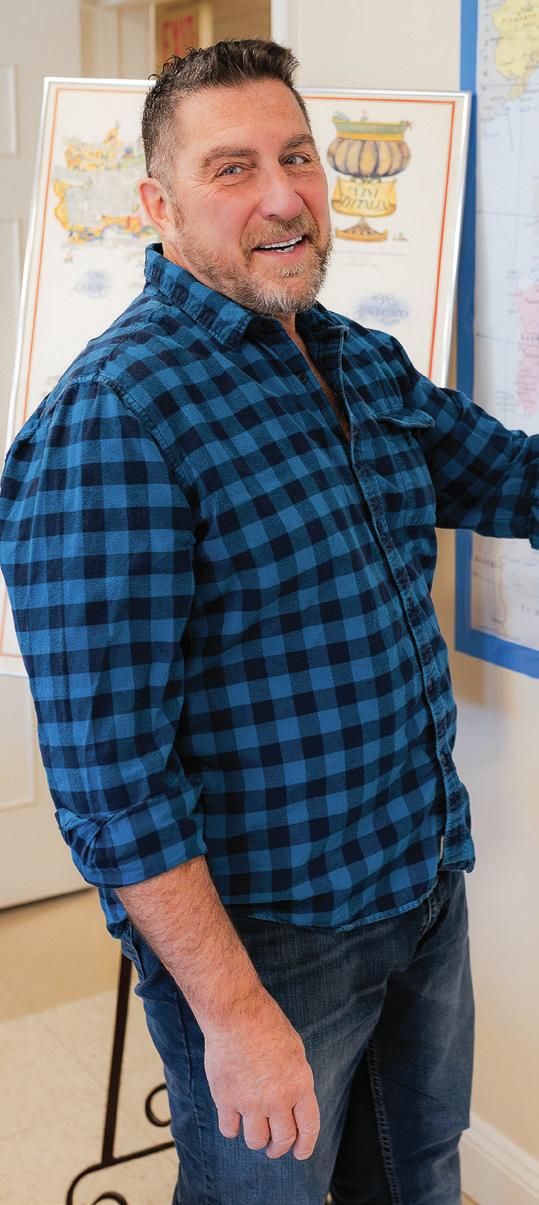
by Jessica Mancini
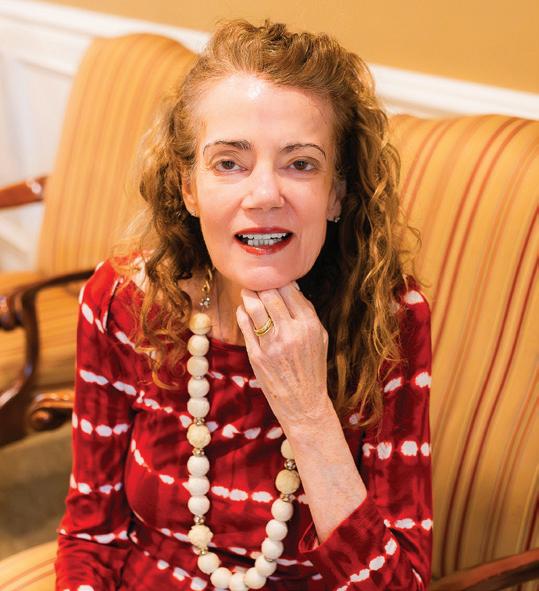
As the 068 area settles into the rhythms of fall, with yellow buses signaling a new academic year, another campus in Ridgefield is coming alive with its own kind of excitement. At Founders Hall, adults aged 60 and older are heading back to class to nourish curiosity, build community, and embrace lifelong learning.
Founders Hall offers an extraordinary array of classes that span the intellectual, physical, and creative spectrum—from history and foreign languages to science, art, and poetry. It’s a place where aging is not defined by limitations, but by exploration.
The hum of possibility fills the hallways as members gather to learn something new or return to long-set-aside passions. For Dr. Joe Ellis, a former Ridgefield High School principal, retirement wasn’t a slowdown—it was a chance to rediscover himself. “You say to yourself, what haven’t I done yet?” he says. That mindset led him to take up piano and drawing. He credits Founders Hall with helping him stay physically strong—through tai
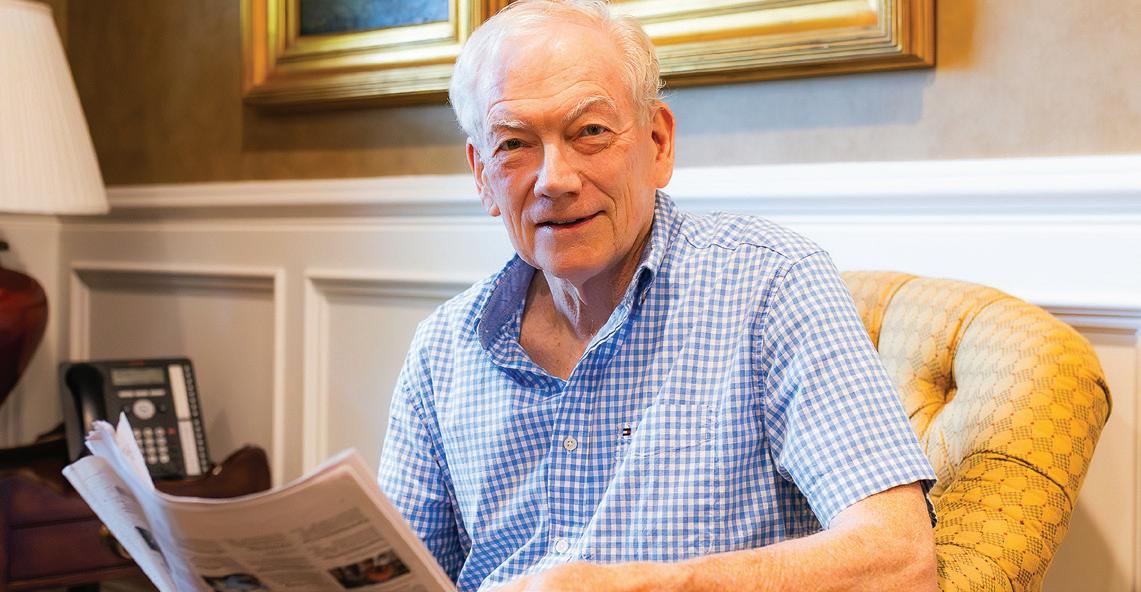

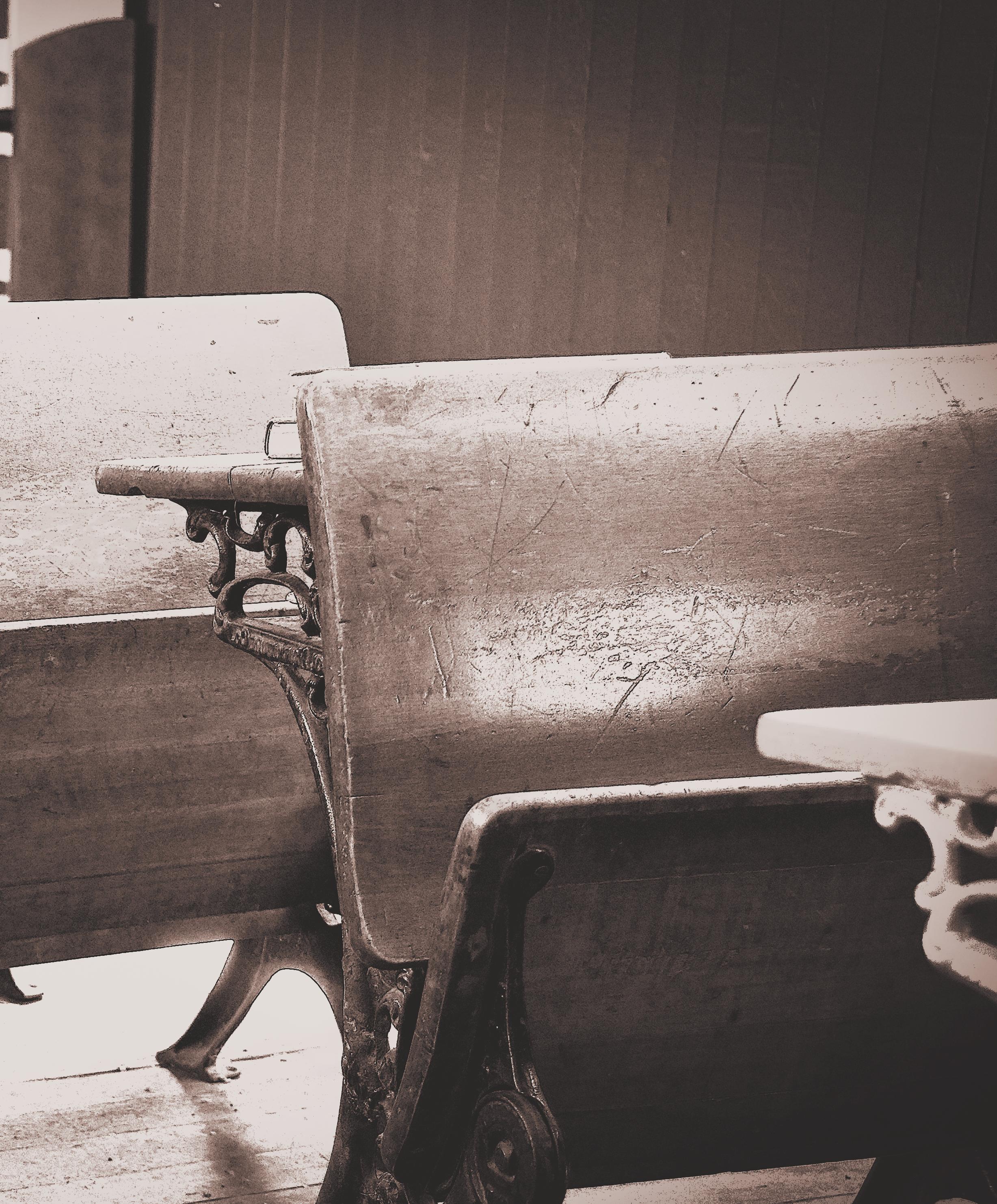
chi and yoga—and mentally engaged. “I believe I speak for the thousands of members when I say that Founders Hall has added a wonderful dimension for the 60-plus community.”
For many, stepping into this next chapter of life can feel uncertain. Founders Hall provides a welcoming bridge between what was and what’s next. After stepping away from her career in 2021, Jane Byrnes began sampling classes across disciplines. Her most recent leap was into the arts. “I was a bit apprehensive,” she admits about joining her first art class. But instructor Lily Fertik created such a supportive space. “I felt a sense of creativity I didn’t even know I had.”
That spirit of discovery is just as present among those who’ve spent their lives immersed in the arts and education. Margaret Sullivan, a former curator at the Guggenheim and nonprofit leader, immediately connected with the quality of instruction at Founders Hall. She cites courses like Film: Eight by Hitch with Robert Klaeger and Music Appreciation with Michael Lankester as standouts. She and her husband, Rick Lawrence, recently made a generous gift to support Founders Hall programming and will host a table at the Breakfast Feast this fall. “We believe it’s an obligation
to give back—to sustain this place for the long term,” she says.
That theme of connection—between people, passions, and past and future—is central to what makes Founders Hall so much more than just a place to take classes. Ron Shirk, a retired communications professional, praises the organization’s new branding for clearly communicating its mission. “It’s not just a place to gather,” he says. “It’s a learning center, a living center.”
Ron now finds himself immersed in poetry, Italian, and history— while also playing basketball and taking fitness classes. “The classes challenge you in ways that redefine what aging looks like.”
Perhaps no one embodies that redefining spirit more than Mark Ceconi, a former elementary school teacher and artist whose work has appeared in The New York Times Book Review. Now, Mark is preparing to teach his own workshop at Founders Hall, joining the community of instructors who bring their experience full circle. “I’m inspired every day by the people here,” he says.
“This place keeps us curious, connected, and young at heart.”
At Founders Hall, fall isn’t just a season—it’s a reminder that learning never gets old, and life’s most meaningful chapters are still being written.•






by Julia Bruce and Ashley Paltauf
On October 18th, the Ridgefield Playhouse will host their annual gala. This year’s event will celebrate 25 Years of the Ridgefield Playhouse, commemorating their evolution into a premier arts and entertainment destination and honoring their continued dedication to their mission of bringing the arts to our community.
The Ridgefield Playhouse is known for booking amazing talent to headline their galas. Previous artists have included Jose Feliciano in 2000, Natalie Cole in 2010, and Bruce Hornsby in 2020. This year’s event will feature nine-time Grammy Award winner, Sheryl Crow. “Our galas are a vibrant celebration—an opportunity to share the Playhouse’s nonprofit mission with our community of supporters while creating an unforgettable grand finale to the year,” says Playhouse Director Ashley Paltauf. “This year has been a joyful tribute to the rich history of the Playhouse, and what better way to cap it off than with a gala starring the iconic Sheryl Crow?”
The evening will feature delicious cuisine from local restaurants, A Table,

Gallo, and the Lantern, in addition to signature cocktails and elegant surprises throughout. Attendees will have the opportunity to bid on one-of-a-kind live and silent auctions. All proceeds raised will support the Playhouse with their Arts in Education and Community Engagement Programs. This year alone, the Arts in Education Program has served over 185,000 students with in-person and virtual shows, over 1,700 free lunches, and over 6,000 books distributed to classrooms. The Community Engagement Program offers affordable and inclusive experiences, including over $100,000 in ticket donations and subsidized tickets for the Family Series.
“As we look ahead, we’re committed to expanding our programming, enhancing our venue, and reaching new audiences. Through innovative performances, arts education, and community engagement, we will continue to evolve as a premier destination for live entertainment. With the support of our patrons and partners, the Ridgefield Playhouse will remain a beacon of artistic excellence for generations to come,” says Paltauf. •
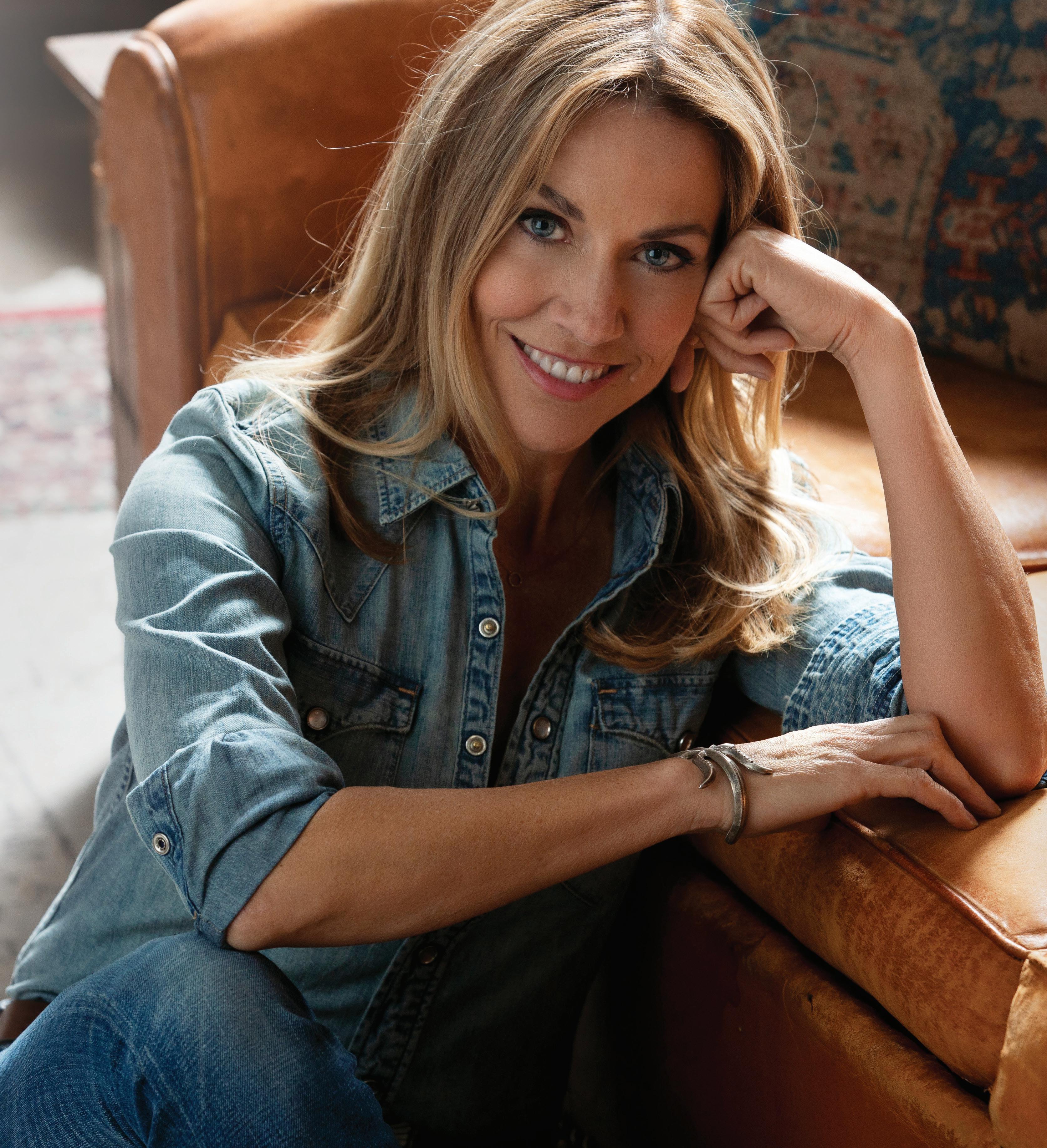
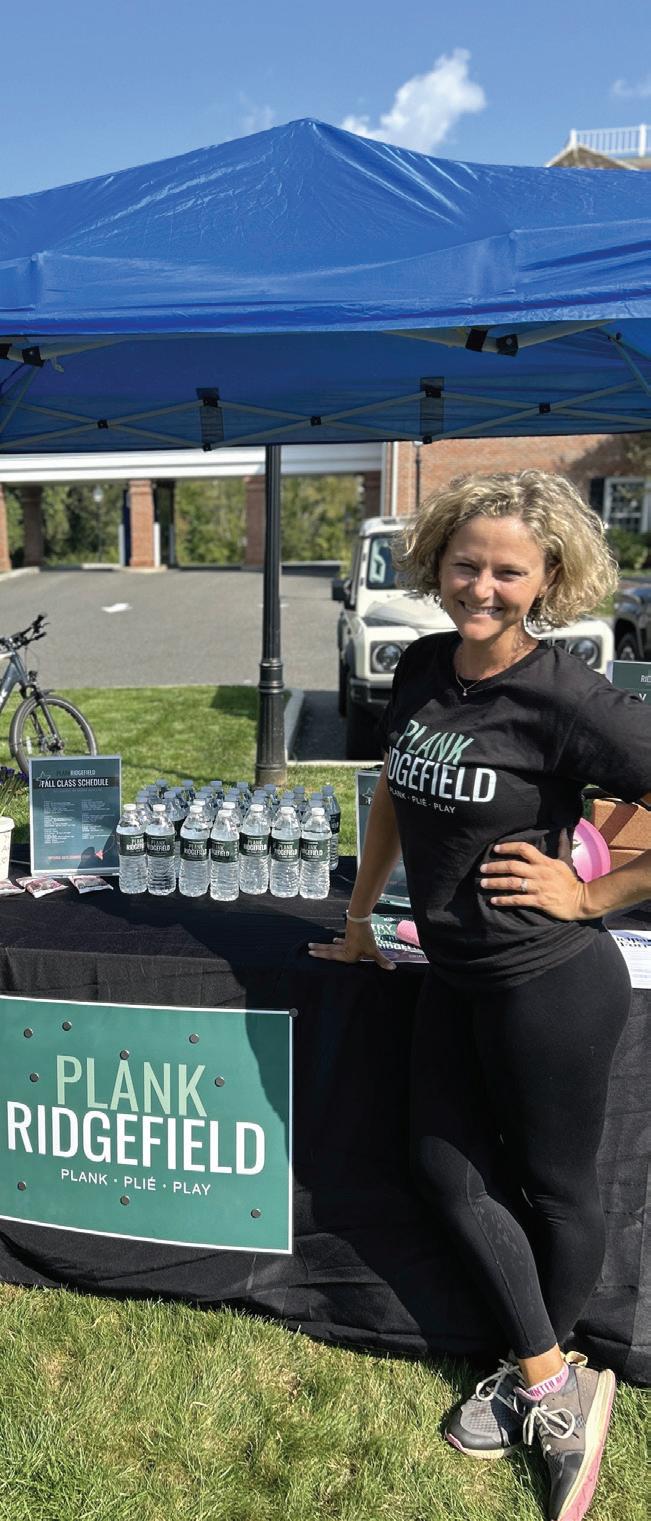


No matter your fitness experience or interests, the Art & Motion Fitness Expo, happening on September 6th in Ballard Park, is the perfect way to get moving. This event, which is free to the public, will celebrate healthy living and the nurturing power of art.
Last year’s event, which was held on Fairfield County Bank’s lawn, was popular with people of all ages. “It was amazing to see the community come together with so much energy. We connected with a ton of great local businesses and even gained some new clients,” says Ari Karp, owner of Steel Fitness.
This year’s Expo will include a downtown scavenger hunt, as well as booths and classes brought to you by various local businesses – such as Plank Ridgefield, Orange Theory, Core Academy, and StretchLab. There will also be a Community Canvas that will be auctioned off, with proceeds going to ArtFul Visual Arts Initiative, a non-profit committed to supporting artists and aspiring creatives. The Fitness Expo is an exciting way to get involved with Ridgefield’s fitness community as well as support this cause.
“This event brings together physical activity and the arts, both of which nurture wellness, in body and mind. The money raised will help local artists continue their pursuit of their craft,” says ArtFul’s President, Dee Dee Colabella.
Additionally, Ezra Zimmerman of EZ Moving, has teamed up with Anna Gluck Real Estate to support the Grass Roots Tennis Program, a youth development nonprofit organization that uses tennis and education to change lives and build community. “Most of my charitable donations in the past have helped with the less fortunate and disaster relief. I was was so inspired by last year’s Kicks for Kids campaign and wanted to help another self-funded athletic program in the area,” says Zimmerman. They will be collecting donations of gently used tennis racquets as well as new or used balls. Ready to get moving? Bring your sneakers and a yoga mat if you have one, and stop by Ballard Park from 10 a.m.- 5 p.m. on September 6th! For more information, please visit www.artfulgives.org/fitnessexpo2025 and www.grassrootste.org •





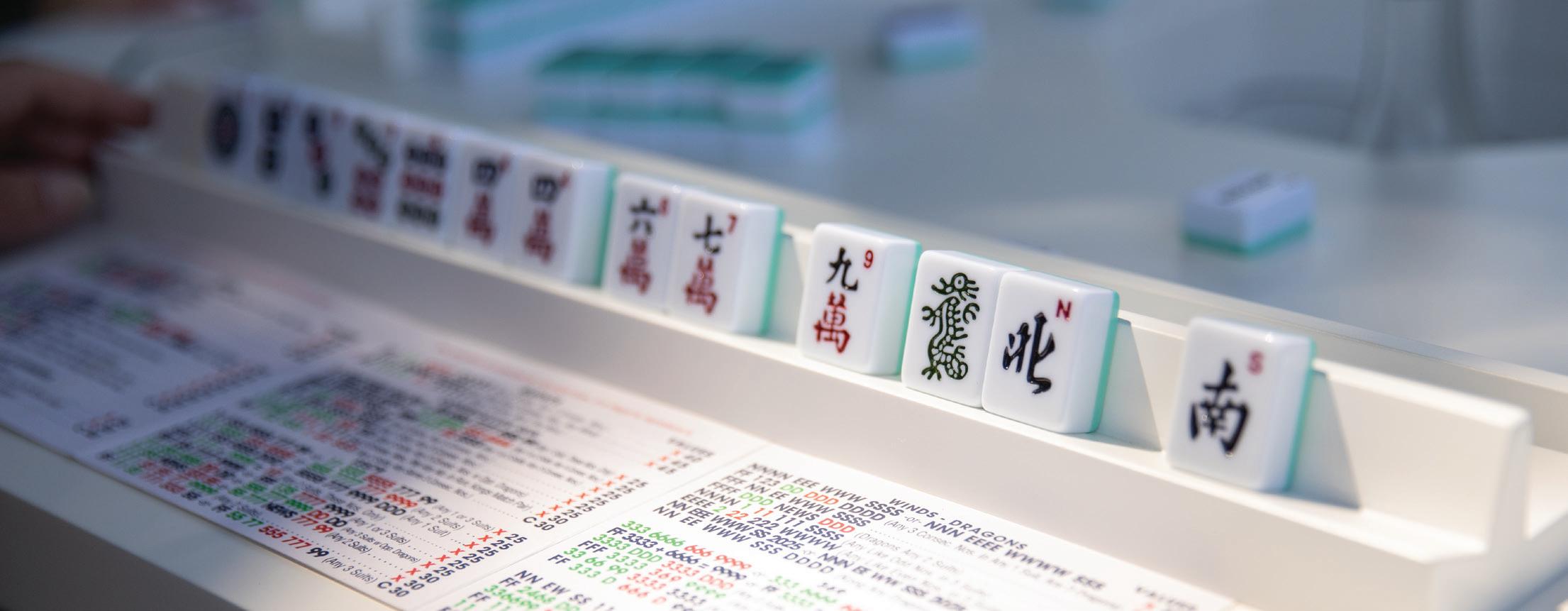


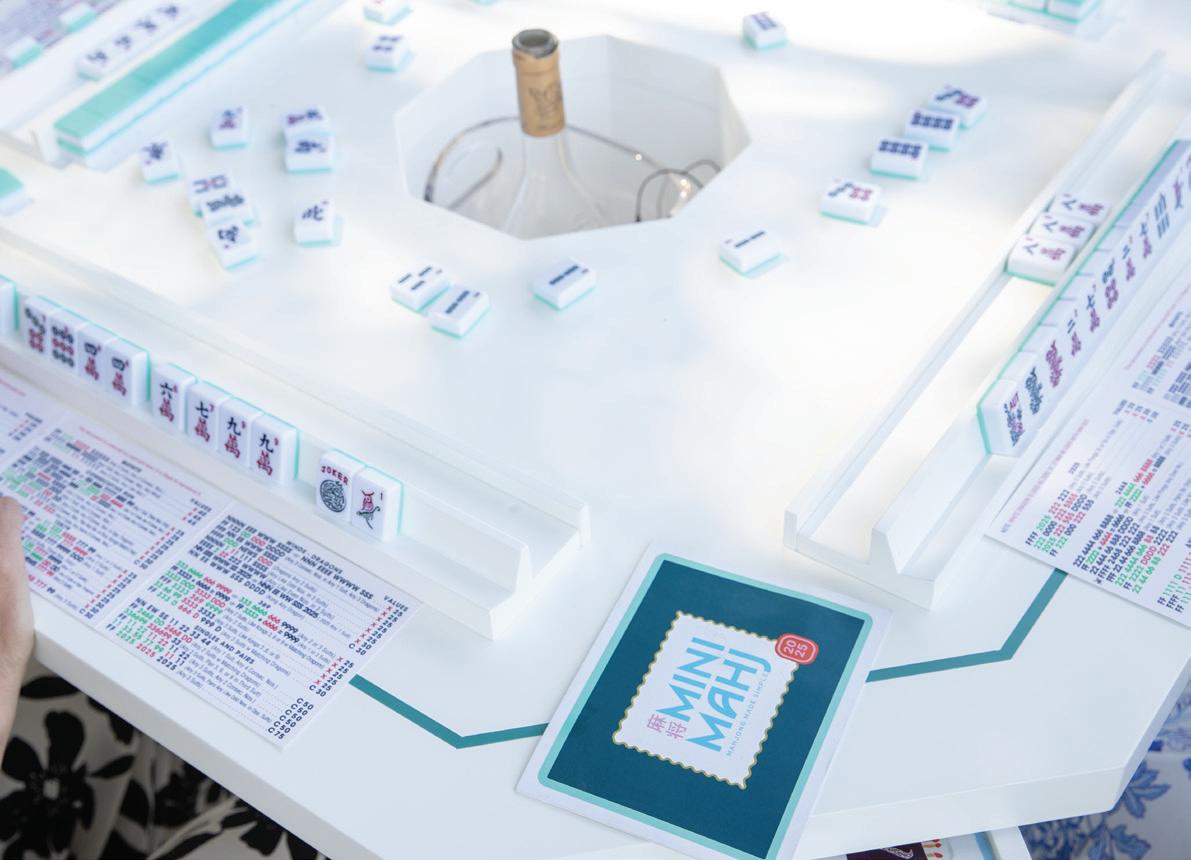
Growing up, my favorite night of the month was always the third Thursday. The tablecloth came out, the snack tables were unfolded, and the port wine cheese was unwrapped. That could only mean one thing: Brenda, Nancy, and Rita were on their way to gossip…er…play Mah Jongg with my mom. They’d sit around the card table “crack”ing jokes and “bam”ming tiles until someone yelled “Mah Jongg!”
Now, 53 years later, the four are still coming together each week to play, and Mah Jongg is seeing a “tile”wave of its own. First brought from China to the US in the early 1900s, the game is now trending among people of all ages, social circles, and snack preferences. According to the National Mah Jongg League (yes, that’s a thing!), they now have more than 350,000 members. That’s a lot of “jokers.”
Today’s game is hardly my mother’s Mah Jongg. Forget the folding tables and vinyl tablecloths – now, it’s all about beauty and accessibility. Local Ridgefield resident Peyton Cochran and Southport neighbor Sandi Wright “meld”ed tradition with modern style to launch Center & Spring, a company creating chic, functional game tables— made locally in Bridgeport.
It all started when Cochran, an interior designer, needed a table for a showcase and couldn’t find anything that fit her aesthetic—or her space. “Most tables had four legs that didn’t work in smaller rooms, or pedestal bases that felt too masculine—heavy, dark wood with felt,” she said. “I wanted something beautiful, feminine, and fun. It needed drawers for tiles and a place to set a drink.” This was a “game”changer, especially for the older generation who finds traditional set-ups

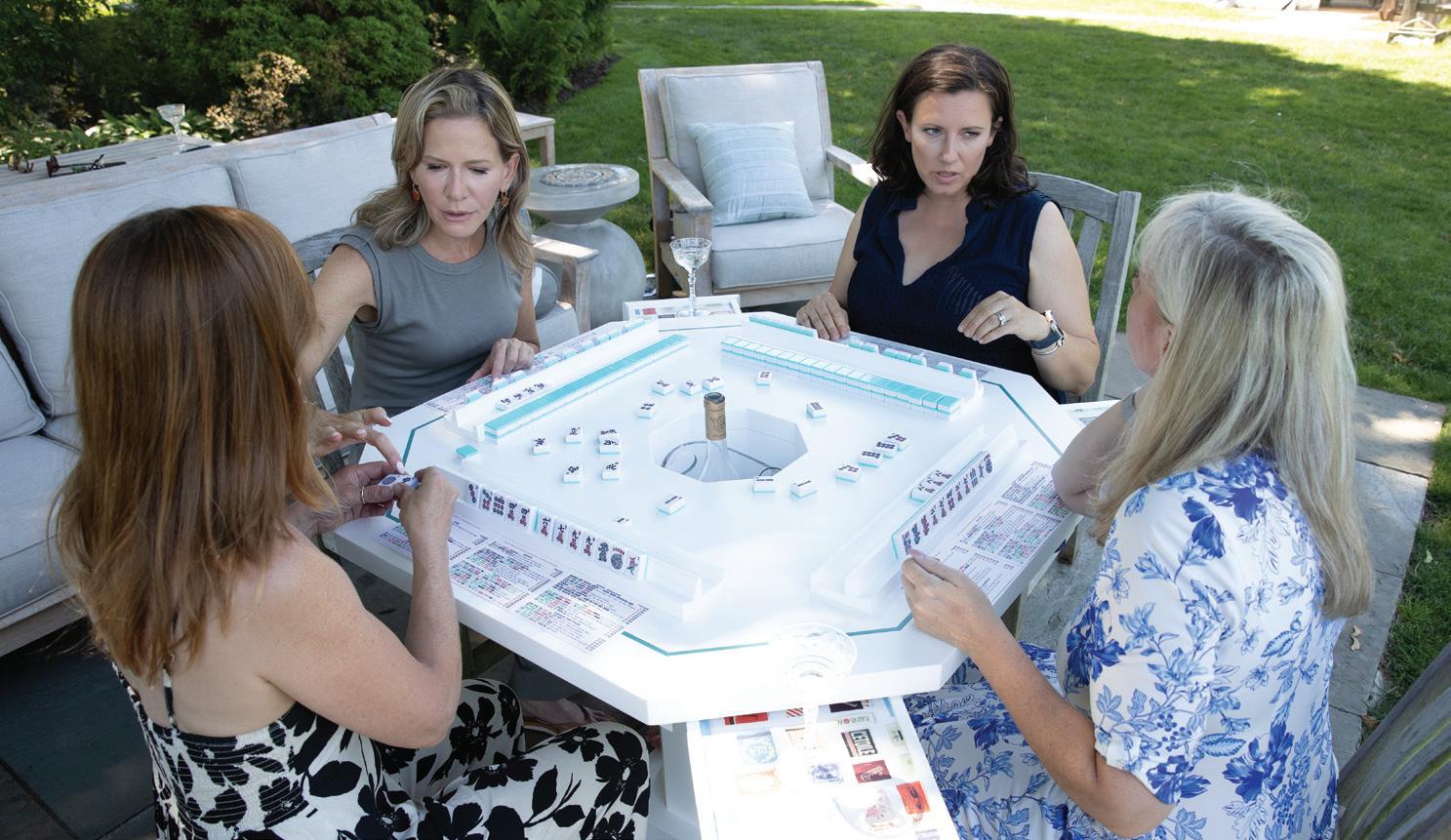
frustrating—low surfaces, crowded legs, and inaccessible designs. “It wasn’t just about style,” Cochran said. “It was about making the game more inclusive.”
Wright was one of Cochran’s first customers. “I surprised my 81-year-old mom with a table for Christmas,” she said. “She loved it— and my mind started spinning with ways I could help Peyton scale this.”
Wright and Cochran quickly formed a “kong” like bond. Wright’s 25 years in business and social impact combined with Cochran’s design and craftsmanship, are now bringing the beauty of the game to people from all different stages of life. “Our first three sales went to a Gen Zer, a woman in her 50s, and an 88-year-old grandmother,” Cochran said.
So, what’s behind the game’s resurgence? In a world filled with screens, scrolls, and solitude, Mah Jongg brings people together, face-to-face, tile-to-tile, irl. It’s one place where ‘jokers” are welcome and “flowers” bloom all year long. “We laughed more on Mah Jongg night than any other time,” my mother said. “It was our therapy before therapy was a thing.”
And it turns out that Mah Jongg isn’t only good for the soul—it’s good for the brain, too. Studies show it can help improve memory and cognitive function.
Ready to hop on the Mah Jongg “bam”-wagon? Continuing Education programs in Ridgefield, Wilton, and Redding offer beginner classes for those who still think a “dot” is something you do with a pen.
So gather your friends, learn the lingo, and you’ll be “meld”ing like a pro in no time. Just don’t forget the port wine cheese. After all, some traditions are worth keeping. •
Curious about the Mah Jongg terms above?
Bam, crack, dot, flowers, and jokers are the names of the various tiles. A meld is a set of tiles such as a Pung (three of a kind) or a Kong, (four of a kind) that a player reveals during play and is a fundamental part of building a winning hand.
by Carin L. Weisman
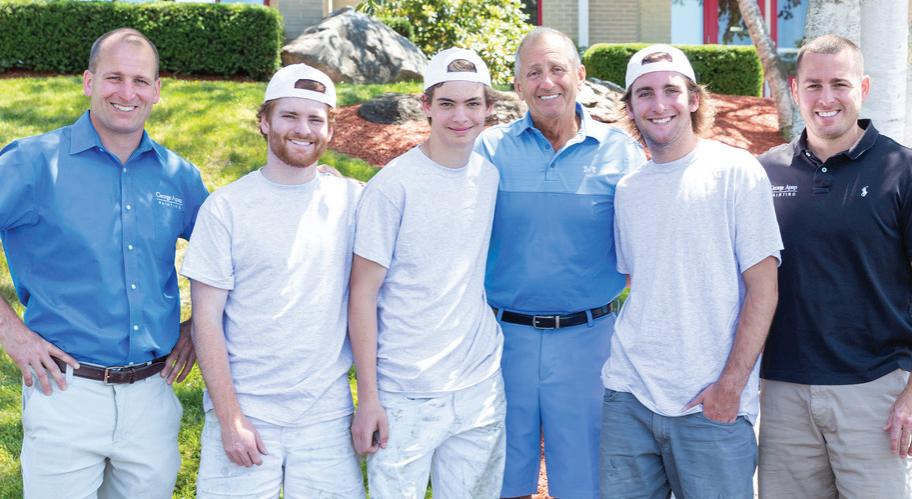


In a world increasingly dominated by big-box retailers and large corporations, there’s something undeniably special about a small business that has stood the test of time. These long-term, locally rooted businesses are more than places to find services to hire—they’re cornerstones of their communities. They remember your name, ask about your family, and show up for every fundraiser, and neighborhood project. In tight-knit towns, the relationship between small businesses and the people they serve runs deep. One such company is George Apap Painting. With locations in Ridgefield as well as Patterson, New York, the Apap name is one that may seem familiar.
Nearly a century ago, Charles Apap came to the United States from Malta, starting his journey as a painter’s apprentice. In 1929, he established his

business in Manhattan, then quickly relocated to Putnam County, New York. His son, George Sr., took the helm in 1962, expanding the operations into Fairfield County. In 2004, George and Steve, his sons, assumed leadership and further broadened the business. Today, many fourth-generation family members, including sons, daughters, nieces, and nephews, have worked in the family business.
“The key to our success is our people. We invest in them through training, safety programs, and genuine appreciation. This creates a shared commitment to the success of our business. Our staff is happy and invested, and the quality of their work reflects it. We have amazing customer service and old-world craftsmanship which creates raving, lifetime fans,” says George Apap, President.
When you hire a trustworthy company, you don’t have to worry about shortcuts, poor-quality work, or hidden costs. That means better materials, proper techniques, and fewer future repairs
or touch-ups. Every homeowner needs to build a network of trusted professionals for any work needed in their home. Having a reliable company that you can rely on when you need to tackle numerous “to-do” projects is immensely beneficial.
George Apap Painting specializes in interior/exterior painting, hardwood floor refinishing and cabinet painting. They can also handle your carpentry, concrete coatings, exterior softwash, and Shine Holiday Lighting.
As communities continue to evolve, the steady presence of small, long-term businesses serve as a reminder of what truly matters—relationships, reliability, and roots. They appreciate repeat business and customer referrals. Supporting them isn’t just a transaction—it’s a commitment to preserving the character, resilience, and spirit of your community for generations to come. •
by Carolyn Prusa
Sometimes you need to shake things up a bit. That might include your hips.
“Dance is therapy,” explains Tonja Dias, co-founder of Pivot, the new dance studio in Ridgefield.
You know what? She’s right. I popped into my first-ever line dancing class at Pivot. Once I conquered my nerves, I noticed that items on my to-do list previously buzzing around my brain had disappeared—poof! Instead, I felt elated—giddy, even—as I stumbled across hardwood floors attempting to keep up with instructor Anastasia in her cool white boots, as well as Kenny Loggins, who urged us to cut loose. So, we did.
Pivot is the dream of partners and reallife couple Tonja and Randy Dias. Between the two dancers, they share just under 65 years of experience in the professional dance world as champion competitors, choreographers, and instructors. They are the real deal. Highlights from Tonja’s resume include choreographing for Tony Bennett, Gossip Girl and The Handmaid’s Tale, while Randy toured with Champions of the Dance alongside Dancing with the Stars fan faves Jonathan Roberts, Anna Trebunskaya, and So You Think You Can Dance star Iveta Lukosiute.
Tonja and Randy are also long-term residents of Ridgefield, which inspired the business in a big way.
“The community really grew on us,”
says Tonja. When the Dias family decided to open the studio in Ridgefield, Tonja celebrated the idea of combining her passions: “I can bring dance and life and joy to the community all together!”
Tonja and Randy found the perfect spot within Way of the Sword Academy, where owner Mike Martin welcomed the dancers into his community space. (Pivot shares it with the chess players on Saturdays. If you think about it, chess is also a dance. Of the mind.)
At Pivot, Tonja and Randy offer ballroom, Latin, and social dance instruction for all levels and ages through private lessons, group classes, and social practice parties. Three additional instructors round out the crew. It’s okay—even encouraged—to sign up for a lesson or hop into a class if you haven’t tried a style before.
“People can come to us, expect to be seen, welcome, and supported, regardless of

experience level,” Tonja says. “You just need to bring some curiosity and the willingness to move.”
It’s hard to resist Tonja’s enthusiasm when you’re in her class. Guiding the group with lightness and a wry sense of humor, she senses when students are ready for the next step or need more time to master a move. Her mission to bring joy through dance is also clear. It’s fantastic exercise, helps you connect with your partner, as well as make new friends within the community. Reluctance to sign up for a lesson or class, Dias observes, is often related to busy schedules. What we need is to dedicate time for ourselves to unplug and get on the dance floor.
“When students come into Pivot,” she says, “They’re always so happy they took that first step.”
It’s in the name. If you’re feeling stuck, it’s time to pivot. •
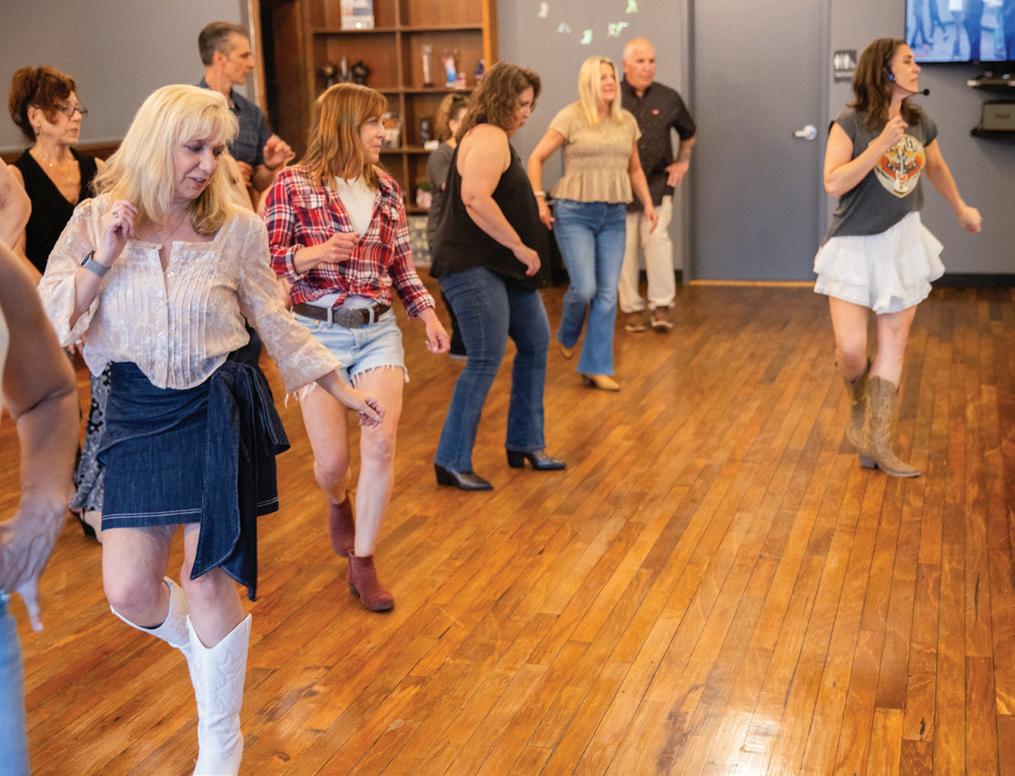




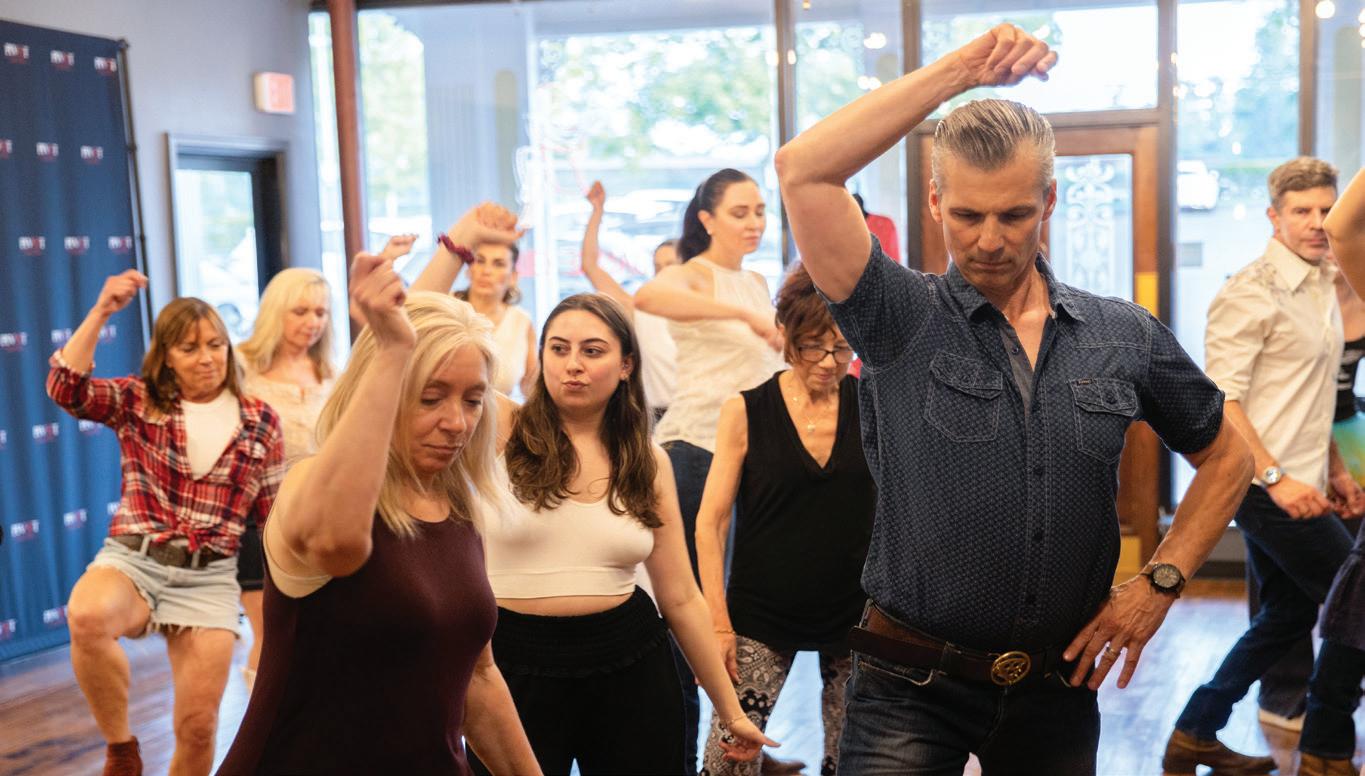



Miles Elliot has been rocking turntables since high school, turning a teenage passion into a professional career in 2010. In 2013, he was voted Connecticut’s Best DJ by the Hartford Advocate, and today he’s a resident DJ at TAO Mohegan Sun and Beauty & Essex. Miles known for his ability to blend genres and energize any crowd.
Beyond the stage, Miles is the Director of Bach to Rock Ridgefield, a premier music school offering lessons, camps, and band programs for students of all ages. He was originally hired to run the school’s DJ program, Beat Refinery, but quickly rose to lead the entire school. As a DJ, musician, and music producer, Miles finds purpose in inspiring the next generation of artists by helping them to discover their voice and thrive creatively.
For more information or to book an event, you call 203-403-3172 or email ridgefield@bachtorock.com. •
you can now vote for who to highlight for One More Thing: Go to 068magazine.com/voteforonemorething link and fill out the form to recommend a person you would like to see highlighted who is exceptional in the arts. You can vote for any category of artist and then list the name of the artist or work of art. If you are an artist, please use the HIGHLIGHT MY ART graphic which can be downloaded to campaign for votes. The artist with the most votes in October will be spotlighted in the November/December issue.
Thank you for supporting the arts in Fairfield County.


